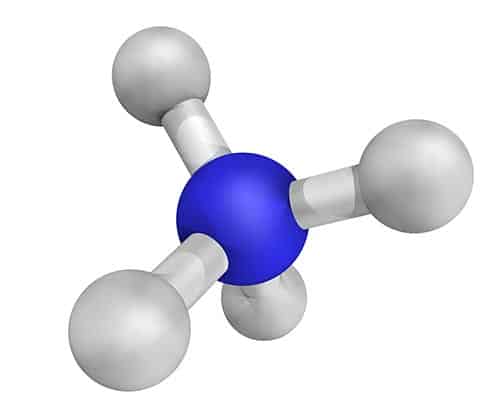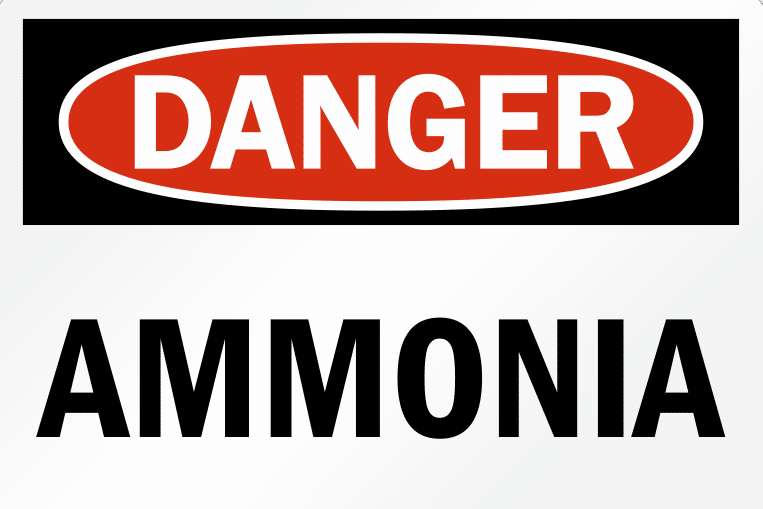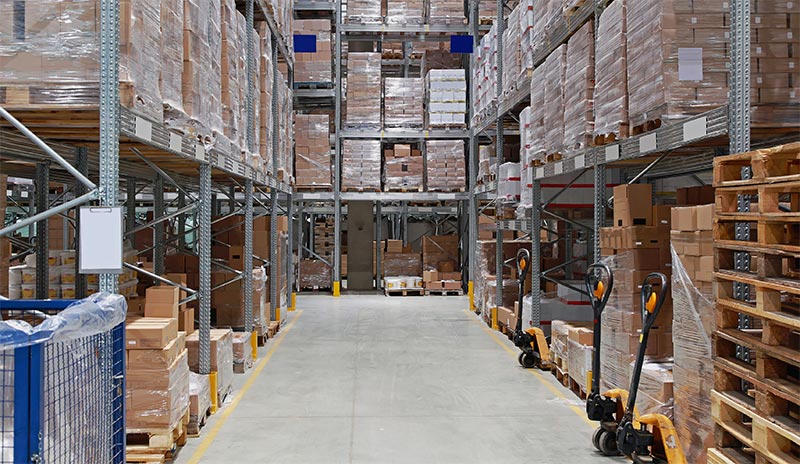Ammonia has been in continuous use as a refrigerant longer than any other. It is in fact among the first refrigerants to be commonly used and remains one of the most widely used today.
 Ammonia (R-717) is unique among refrigerants currently in use in that it is not a halocarbon like most other commonly used refrigerants. It is a naturally occurring chemical (NH3) that consists of nitrogen and hydrogen. Almost all other refrigerants are a combination of carbon and halogens, the group of elements that includes fluorine and chlorine. This factor sets ammonia apart from the vast majority of other refrigerants by limiting its effects on the environment. It has an Ozone Depletion Potential (ODP) rating and a Global Warming Potential (GWP) rating of 0. Only CO2 comes close with a GWP of 1. R-22, by comparison, has a GWP of 1810 and an ODP 0.05 whereas R-404A (a commonly used substitute for R-22) has a zero ODP but GWP of 3300. Another R-22 substitute (though not compatible as a retrofit), R-134A, has a GWP of 1300.
Ammonia (R-717) is unique among refrigerants currently in use in that it is not a halocarbon like most other commonly used refrigerants. It is a naturally occurring chemical (NH3) that consists of nitrogen and hydrogen. Almost all other refrigerants are a combination of carbon and halogens, the group of elements that includes fluorine and chlorine. This factor sets ammonia apart from the vast majority of other refrigerants by limiting its effects on the environment. It has an Ozone Depletion Potential (ODP) rating and a Global Warming Potential (GWP) rating of 0. Only CO2 comes close with a GWP of 1. R-22, by comparison, has a GWP of 1810 and an ODP 0.05 whereas R-404A (a commonly used substitute for R-22) has a zero ODP but GWP of 3300. Another R-22 substitute (though not compatible as a retrofit), R-134A, has a GWP of 1300.
Not only is its benign effect on the environment a point in favor of its use, but ammonia has excellent qualities as a refrigerant. It has for instance, the highest refrigerating capacity per pound of any refrigerant and a number of other outstanding thermal properties that make it popular for many refrigeration applications. Compared to CFCs (R-11, R-12 and R-502 which were phased out in the mid-90s due to their high ODP ratings), ammonia is from three to ten percent more efficient.
With regards to R-404A, the main alternative to ammonia in industrial and manufacturing applications, the two are nearly equal in various factors of their efficiency. R-404A is more commonly used in Europe for these types of applications whereas ammonia predominates domestically. According to one analysis, “in terms of relationship saturation temperature/pressure, volumetric cooling capacity, thermodynamic efficiency of the reference ideal cycle” they are practically equivalent. R-717 however, does have certain comparative advantages.
Cold Storage Applications
One of the most important factors in a refrigerant’s performance is its heat transfer capability. The boiling point of R-410A is -55°F but for ammonia it’s only -28°F, almost half of that of R-410A which indicates that that much less energy is required to achieve the same amount of work, or in the case of refrigeration — cooling. A number of practical considerations flow from this difference. For starters, less
physical area is needed in the equipment where heat transfer occurs (i.e., condensers and evaporators), thereby saving space and reducing plant costs as well as operating costs.
This leads to another benefit, the efficiency of ammonia in the compression process. When compared to each other using reciprocating compressors (the kind often found in many commercial applications) ammonia only performs at a modest 10% edge over R-404A. But with screw compressors, ammonia’s advantage increases hand-in-hand with increases in the pressure ratio employed.
A further benefit of R-717 flows directly from its efficiency. An ammonia-based system requires less electricity, resulting in lower operating costs. When used with screw compressors, ammonia requires less energy to achieve the same efficiencies compared to R-404A.
Even compared to other refrigerants, ammonia also performs favorably. In fact, it does so well, a CO2 (R-744) compressor manufacturer recently touted a study that showed that with their compressors (enhanced) R-744 systems have finally reached parity with R-717 systems in warmer climates. The report goes on to say that in cooler climates these systems have even achieved gains over ammonia systems. But CO2 still entails some challenges that not every operator will be comfortable contending with. These include, among others, higher operating pressures that require the use of specialized piping and the need for CO2-specific control valves and a type of condenser that also works as a gas cooler under certain conditions. Although CO2 is like NH3, a refrigerant that’s been around for a very long time, it is still fairly new to many perspective users.
Another consequence of ammonia’s high volumetric cooling capacity of is the need for less piping than would be required for halogenated refrigerants. Narrower diameter pipe can be used with R-717. This in turn further lowers the cost of using ammonia by making installations less expensive with less piping needed.
On the flip side of ammonia’s consideration, it tends to become corrosive to copper, brass and other non-ferrous materials when it combines with water. Copper is commonly used in refrigeration equipment for halocarbon systems. It’s not an option for systems using R-717. Another concern is its behavior with oil. As with almost any mechanical system, refrigeration systems require lubrication to reduce friction in moving parts extend their durability. Ammonia is non-miscible with oil, so systems in which it’s used must be designed to account for this characteristic and prevent oil from pooling in heat exchangers and thereby reducing efficiency.
But one characteristic that might be considered a drawback, and in fact has contributed to the lack of ammonia’s use in food retail, is in the applications where it is deployed; its odor. In concentrations above 50 ppm, ammonia is readily noticeable due to its pungent smell. It is in this sense self-alarming. In comparison to other refrigerants, consequently, this can actually be a benefit in that leak detection is made all the much easier. But too much of a good thing can be the opposite of a benefit.
Ammonia’s Limitations
On the basis of environmental and performance factors, ammonia would seem to be an excellent choice. But there are other considerations that come into play when assessing its practicality for various applications beyond industrial and distribution facilities’ use.
In a particularly a bad string of events in 2016 that included an ammonia leak at a Shamrock Farms facility in Phoenix which resulted that April in multiple people complaining of burning eyes. A month earlier, a Boston warehouse worker died from an ammonia leak. And a month before that, nine people were sickened from a leak at a Brazilian fertilizer plant. In December of 2015, two men working in a nitrogen plant in Canada were sent to the hospital after an ammonia leak. One succumbed to his injuries.
 A meat processing plant in South Carolina experienced an ammonia leak in 2018 that fortunately did not result in any deaths or injuries. It did, however, cause an evacuation within a half-mile radius as a precaution at two in the morning.
A meat processing plant in South Carolina experienced an ammonia leak in 2018 that fortunately did not result in any deaths or injuries. It did, however, cause an evacuation within a half-mile radius as a precaution at two in the morning.
More recently, in 2020, ammonia accidently released from a meatpacking plant in Texas killed more than 5,000 fish in a nearby creek. While ammonia systems are safe and efficient. provided the ammonia stays contained in the systems, as an article reporting the incident stated: “ammonia is highly corrosive and can injure or kill people who inhale it according to the U.S. Department of Health and Human Services.” It’s news like this that makes prospective users in consumer-facing business weary of its adoption.
Enough of practically any refrigerant by nature is more or less toxic in certain conditions. Most refrigerants however, besides being colorless are also odorless. R-717’s odor is distinctly noticeable even in very small concentrations. This means that since refrigeration systems are almost never entirely leak-proof, the prospect of a highly noticeable, highly toxic substance accidentally being released in a commercial public space has until recently been enough to almost completely forestall its use in food retail applications.
Ammonia’s Improving Prospects
More recently the business environment for commercial ammonia applications has been changing. With the adoption of new regulatory policies and technically innovative approaches, the food retail sector has begun to open up to the use of R-717. Under the EPA’s SNAP (Significant New Alternatives Policy) program the push for industry-wide adoption of natural refrigerants has gained significant momentum over the past several years that the program has been in place.
Starting in 2012, with one store in California, and more recently another two stores in California and Georgia, ammonia- based rack refrigeration systems have been installed. The three stores use low-charge NH3/CO2 cascade systems. Ammonia in a cascade system is used as a condenser, in the upper section of the cascade, for the CO2 in the lower section. Only the CO2 is sent out to the sales floor of the store while the limited amount of NH3 used in the system is kept entirely within the mechanical room (separate from the sales floor) and the piping to the outdoor condenser. Such a design entirely eliminates the risk of ammonia reaching public areas of the store.
The limited amount of ammonia employed in these systems, combined with improvements in lead-detection and monitoring allow stores like these to operate with virtually no risk to the public. It is consequently not difficult to see why ammonia may finally be starting to attract more consideration as a commercially useful refrigerant in the food retail sector.

